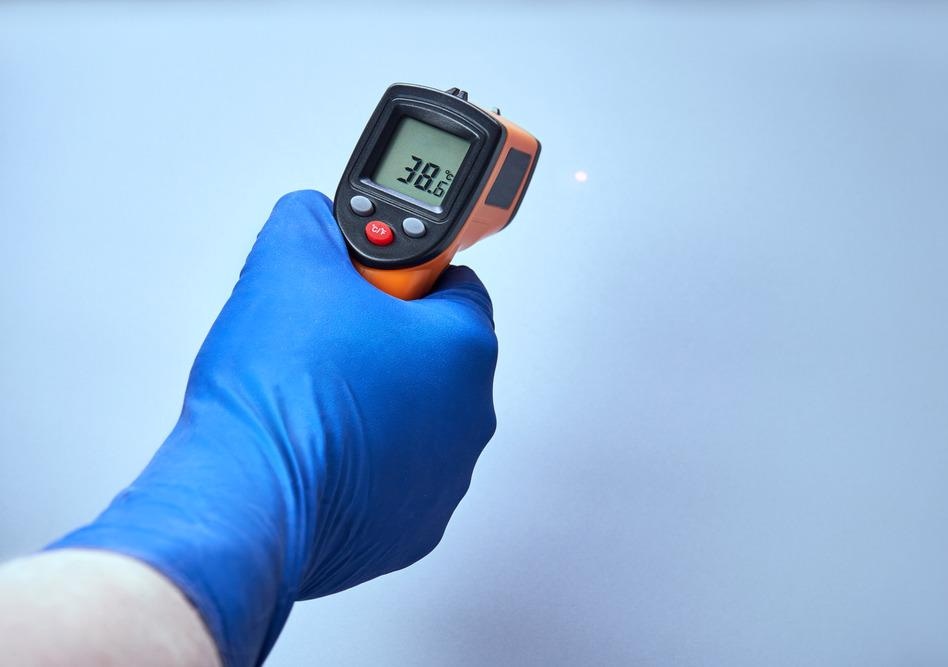Contact temperature sensors rely on physical contact with an object and use conduction to monitor temperature changes. On the other hand, non-contact sensors do not require physical contact and detect temperature changes based on optical analysis of infrared radiation.
There are a few types of contact temperature sensors, including thermocouples, thermistors, and resistance temperature detectors. In a thermocouple, a voltage difference is created by the temperature difference between two dissimilar wires., and temperature is calculated when the thermocouple sensor measures the voltage difference.
Thermistors are typically made from ceramic or polymers and differ from thermocouples by measuring a resistance change. A common type of this type of contact temperature probe is the negative temperature coefficient thermistor, where the resistance decreases as the temperature increases. Resistance temperature detectors are similar to thermistors and are often made of platinum.
Non-Contact Temperature Sensors
Non-contact temperature sensors include optical pyrometers, radiation thermometers, thermal imagers, and fiber optic sensors.
Radiation thermometers measure the radiation emitted from an object to gauge temperature differences. Thermal imagers are similar to radiation thermometers. However, they can calculate a two-dimensional space rather than measuring temperature based on a given point on the surface of an object.
Fiber-optic temperature sensors are variants of radiation thermometers. Radiation is sensed by an active sensing device, and the system processes and converts it into a temperature readout.
Optical pyrometers have an optical system and a detector, measuring temperatures that are too bright to see with the naked eye. The optical system focuses the radiation onto the detector, providing the temperature measurement.
Applications of Temperature Sensor Types
Thermocouples are utilized in many common applications, including home appliances, such as refrigerators, and engines for uses such as measuring exhaust gas temperature. Thermistors are used in fire alarms, ovens, and digital thermometers.
Optical pyrometers are crucial for the smelting industry as they can measure the temperature of moving objects at extreme temperatures.
The use of temperature sensors in the automotive industry includes resistance temperature detectors for intake air temperature sensors and fiber-optic temperature sensors to set a temperature limit for engines, helping to avoid overheating.
Advantages of Different Temperature Sensors
Thermocouples are inexpensive, easy to use, have an extensive temperature range, and are self-powered. However, they suffer in terms of accuracy.
Although thermistors are sensitive and have a low cost, they are non-linear and self-heating. Radiation thermometers are accurate, repeatable, and have long-term stability. However, their response is slow, and the temperature range they can detect is limited. Radiation thermometers are also not as cost-efficient as other sensors due to their high expense.
Optical pyrometers, on the other hand, can measure high temperatures with high accuracy. However, they are expensive, and accuracy can be affected by thermal background radiation, dust, and smoke.
Fiber-optic temperature sensors are immune from nearby radiation and are accurate with a fast response time, but can be expensive, and measurement systems can be complex to develop. Thermal imagers create an entire heat map of difficult to touch or out of reach objects, but the images can be difficult to interpret.

Image Credit: Alexandr Safonov/Shutterstock.com
Innovations in Temperature Sensor Types
Innovation is driving the field forward. Recently, flexible temperature sensors, including flexible thermocouples, flexible thermistors, and flexible thermochromic types, have been studied and optimized; active-matrix flexible temperature sensors and self-powered flexible temperature sensors are examples.
Printable, high-sensitivity flexible sensors have been explored to provide temperature monitoring of patients. There is a trend toward developing wearable sensors that can monitor temperature, circumventing traditional issues with bulky equipment and errors in measurement due to numerous factors such as the wearer's movement.
Other prominent research in the field of non-contact infrared temperature sensors is recent work on creating a low-cost, more accurate Arduino-based infrared thermometer for body temperature detection. Arduino is an open-source electronics platform that converts input to output. This research is aiming to circumvent the problems inherent with non-contact infrared sensors currently on the market.
Further explorations include coating an infrared thermopile sensor lens with graphene platelets for an ear thermometer, presenting a novel design for continuous temperature monitoring. A novel non-contact temperature sensor algorithm for face detection in a video sequence has also been developed with high specificity.
There is an increasing trend toward non-contact temperature sensors in the sensors industry. The market is predicted to grow to $1350.2m by 2027, indicating that the future for non-contact and contact temperature sensors is heating up.
References and Further Reading
Liu, R. et al. (2021) Flexible Temperature Sensors Front. Chem.9 pg. 780. Available at: https://doi.org/10.3389/fchem.(2021)539678
Su, Y et al. (2020) Printable, Highly Sensitive Flexible Temperature Sensors for Human Body Temperature Monitoring: A Review Nano Research Letters 15. Available at: https://doi.org/10.1186/s11671-020-03428-4
Goh, N W-J et al. (2021) Design and Development of a Low Cost, Non-Contact Infrared Thermometer with Range Compensation Sensors 21:11: 3817 Available at: https://doi.org/10.3390/s21113817
Chen, H.Y et al. (2020) Investigation of the Impact of Infrared Sensors on Core Body Temperature Monitoring by Comparing Measurement Sites Sensors (Basel) 20(10): 2885. Available at: https://dx.doi.org/10.3390%2Fs20102885
Prnewswire.com (2020) Non-Contact Temperature Measurement Market to Reach USD 1250.2 Million by 2027 | Reports and Data. [online] Available at: https://www.prnewswire.com/news-releases/non-contact-temperature-measurement-system-market-to-reach-usd-1350-2-million-by-2027--reports-and-data-301098017.html
Thomasnet.com. (2021) Types of Contact Sensors. [online] Available at: https://www.thomasnet.com/articles/instruments-controls/types-of-contact-sensors/
Thomasnet.com. (2021) Types of Noncontact Sensors and Their Applications. [online] Available at: https://www.thomasnet.com/articles/instruments-controls/types-of-noncontact-sensors/
RoboticsBiz. (2021) Temperature sensors - Advantages and disadvantages. [online] Available at: https://roboticsbiz.com/temperature-sensors-advantages-and-disadvantages/
Omega.co.uk. (2021) Non-contact thermometers - Types and terms. [online] Available at: https://www.omega.co.uk/literature/transactions/volume1/thermometers2.html
Disclaimer: The views expressed here are those of the author expressed in their private capacity and do not necessarily represent the views of AZoM.com Limited T/A AZoNetwork the owner and operator of this website. This disclaimer forms part of the Terms and conditions of use of this website.